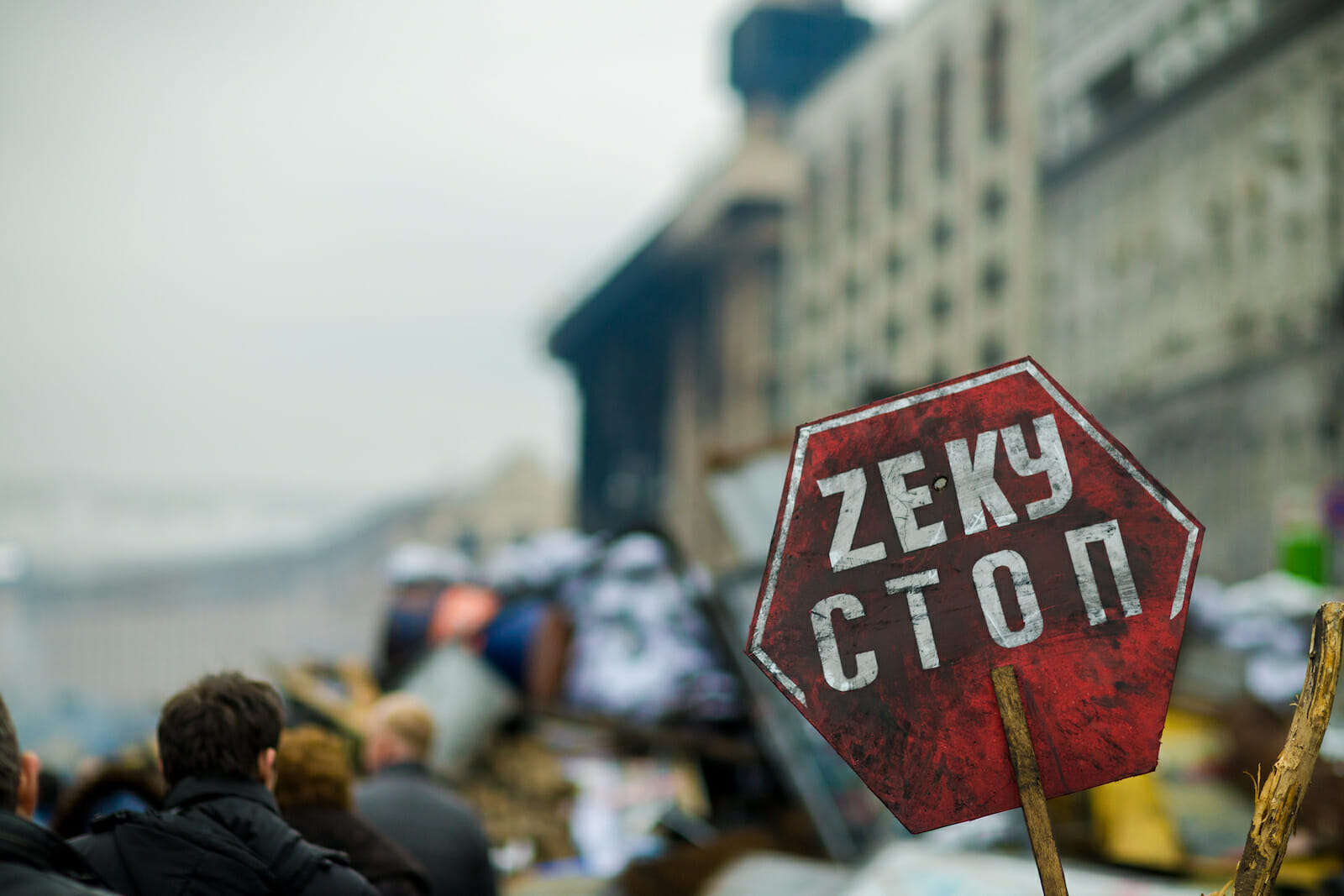
Ukraine’s Spiral into Ethnic Conflict: Deliberate and Unnecessary
Before it became a fiery battlefield, Kyiv had been a hotbed of idealism. Doctors staffed makeshift clinics; grandmothers prepared buckwheat stew in outdoor kitchens; factory workers and pop stars alike rallied massive crowds on Independence Square or the Maidan Nezalezhnosti. The crisis in Ukraine began as a pluralist protest. Now, the country is at risk of becoming the next Yugoslavia. Revolutions are not without unintended consequences, but Ukraine’s descent into ethnic conflict is deliberate and unnecessary. It is political opportunism at its worst.
I arrived in Kyiv on December 20th. By then, the metropolis of three million had assumed a medieval character. Nine days before, in the dead of night, formations of armored police marched on Independence Square. As protesters met them with sticks, fists, and fire hoses, the bells of St. Michael’s rang out in alarm for the first time in 800 years. By mid-morning, the police were in retreat, and crowds broke into song. This had been one of the earliest battles in Ukraine’s ordeal, but activists here had dug in for the long haul. Tires, furniture, and sandbags became walls and watchtowers. Rows of tents stored everything from food to art supplies. Smoke from distant campfires spiraled into the bright winter sky.
Independence Square was garrisoned by groups of ragtag volunteers: Soviet veterans fought alongside university students, and Ukrainian nationalists stood next to European liberals. The Maidan’s grassroots origins are admirable, but they were also a weakness.
Leaders of the major opposition parties were routinely mocked, and the ensuing power vacuum allowed fringe groups to exhibit recognizable influence. As an Asian-American, I had never felt threatened in Kyiv and, during a return visit in January, had even been hugged by activists associated with Svoboda, a far-right party. Yet, extremists had exploited the situation. Radicals staged torch-lit rallies, nationalist phrases like “glory to Ukraine” had entered the vernacular, and the occasional neo-Nazi banner appeared in occupied buildings.
Still, the strength of Ukraine’s far-right should not be overestimated. Svoboda and Right Sector, the country’s most prominent nationalist groups, are polling at a combined total of 3%, fractions of the support that Golden Dawn enjoys in Greece or that Jobbik commands in Hungary. After a visit to the country in April, a UN mission reported that Ukraine’s “legislative and policy environment was conducive to the protection of minority rights, including cultural rights.” Yet, when it comes to repression, perception can be just as important as reality.
The most dominant opinion-makers in Ukraine’s East and South are media owned by the Russian government. In March, Channel One claimed that 140,000 refugees had left Ukraine for southern Russia. The accompanying video showed a dozen or so cars, hardly an exodus, lining up at the Ukrainian border with Poland. Not to be outdone, Russia Today reported that there were actually 675,000 refugees. Stories like these were invented to justify President Putin’s invasion of Crimea and to foster separatist movements within Ukraine itself. They are nominally humanitarian, but hateful in practice. Today, Crimea is led by a paramilitary leader who has told the indigenous peoples of the region, the Crimean Tatars, that: “if you do not like it, leave!” Its Chief Prosecutor has threatened to break up the Tatars’ self-governing council. A former head of that body, Mustafa Dzhemilev, is a human rights activist who spent over a decade in Soviet prisons. He has been banned from returning to Crimea for five years.
Self-proclaimed anti-fascists, Ukraine’s separatists are demonstrating an alarming hostility towards foreigners and the press. Gunmen in Crimea had cornered a UN envoy, militia in Eastern Ukraine had kidnapped eight members of the OSCE, and although much attention has been paid to the April 22nd abduction of American filmmaker Simon Ostrovsky, he was just one of seven reporters taken by pro-Russia forces that week. In March, there were 44 recorded attacks against journalists in Ukraine. Of those, 38 had taken place in Crimea or in the country’s East, and separatists were responsible for all 11 kidnappings.
There are provocateurs on both sides of the crisis, but Russia is primarily responsible for the escalation of tensions, armed insurgency, and ethnic conflict. The events in Ukraine have revealed the ability of power politics to exploit liberal values. Russia’s intervention has seen forces that promote xenophobia and oppose free speech legitimized under the guise of anti-Nazism and popular referendums. These are dangerous threats to democracy, not because they are its antithesis, but because they are its imposter.

